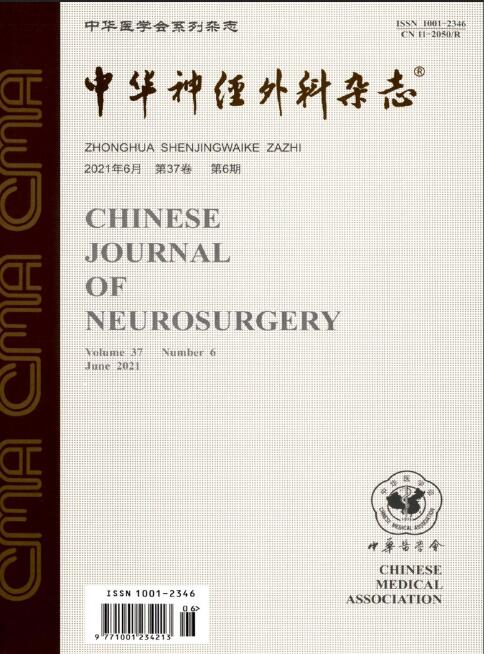Preliminary study of the treatment of brain diseases by remote manipulation of deep brain stimulation with 5G communication
Q4 Medicine
引用次数: 1
Abstract
Objective To verify the feasibility of remote manipulation of deep brain stimulation (DBS) with 5G communication for the treatment of brain diseases. Methods In March 2019, 3 patients(2 parkinson′s disease and 1 essential tremor) who planned to undergo DBS at Department of Neurosurgery, the First Medical Center of the PLA General Hospital were prospectively recruited into this study. The 5G communication links were established between Beijing and Sanya, Hainan (Hainan Hospital of PLA Gerenal Hospital). The operation group completed the steps such as installation of head frame, craniotomy, microelectrode puncture for the patients in the operation room in Beijing. The remote-control group completed the steps such as remote surgery planning, remote control of microelectrode recording (MER), and imaging results confirmation of electrode implantation. Results During remote surgical procedures under 5G communication, the maximum downlink peak rate was 119 Mbps, the uplink peak rate was 27 Mbs, and the average delay was 76 ms. During the operation, the remote control of the MER drive system ran smoothly and there was no delay of signal transmission. The voice and picture of the operating room and the MER signal were transmitted smoothly. The operation was completed successfully. There were no complications such as puncture bleeding, infection and skin ulceration after the operation. At 3-month follow-up, based on clinical rating scale for tremor (CRST) the score of essential tremor patient was improved by 43.6%; the UPDRS (unified Parkinson disease rating scale)-Ⅲ scores of 2 Parkinson′s disease patients were improved by 84.9% and 90.5% respectively. Conclusion The remote control of MER in DBS surgery with 5G communication seems to have certain feasibility. Key words: Parkinson disease; Essential tremor; Deep brain stimulation; 5G communication; Remote control surgery5G通信远程操作脑深部刺激治疗脑部疾病的初步研究
目的验证5G通信远程操作脑深部电刺激(DBS)治疗脑部疾病的可行性。方法前瞻性招募2019年3月在解放军总医院第一医学中心神经外科拟行DBS治疗的3例帕金森病患者(2例帕金森病,1例特发性震颤)。在北京和海南三亚(解放军总医院海南医院)之间建立了5G通信链路。手术组在北京手术室完成患者安装头架、开颅、微电极穿刺等步骤。远程控制组完成远程手术计划、远程控制微电极记录(MER)、影像学结果确认电极植入等步骤。结果5G通信条件下远程手术过程中,下行峰值速率最大为119 Mbps,上行峰值速率最大为27 Mbps,平均延迟为76 ms。在作业过程中,MER驱动系统遥控运行平稳,信号传输无延迟。手术室的声音、画面和MER信号传输顺利。操作成功完成。术后无穿刺出血、感染、皮肤溃疡等并发症。随访3个月时,基于临床震颤评定量表(CRST)的特发性震颤患者评分提高43.6%;2例帕金森病患者UPDRS(统一帕金森病评定量表)-Ⅲ评分分别提高84.9%和90.5%。结论5G通信技术在DBS手术中远程控制MER具有一定的可行性。关键词:帕金森病;特发性震颤;脑深部电刺激;5 g通信;遥控手术
本文章由计算机程序翻译,如有差异,请以英文原文为准。
求助全文
约1分钟内获得全文
求助全文
来源期刊

中华神经外科杂志
Medicine-Surgery
CiteScore
0.10
自引率
0.00%
发文量
10706
期刊介绍:
Chinese Journal of Neurosurgery is one of the series of journals organized by the Chinese Medical Association under the supervision of the China Association for Science and Technology. The journal is aimed at neurosurgeons and related researchers, and reports on the leading scientific research results and clinical experience in the field of neurosurgery, as well as the basic theoretical research closely related to neurosurgery.Chinese Journal of Neurosurgery has been included in many famous domestic search organizations, such as China Knowledge Resources Database, China Biomedical Journal Citation Database, Chinese Biomedical Journal Literature Database, China Science Citation Database, China Biomedical Literature Database, China Science and Technology Paper Citation Statistical Analysis Database, and China Science and Technology Journal Full Text Database, Wanfang Data Database of Medical Journals, etc.
 求助内容:
求助内容: 应助结果提醒方式:
应助结果提醒方式:


